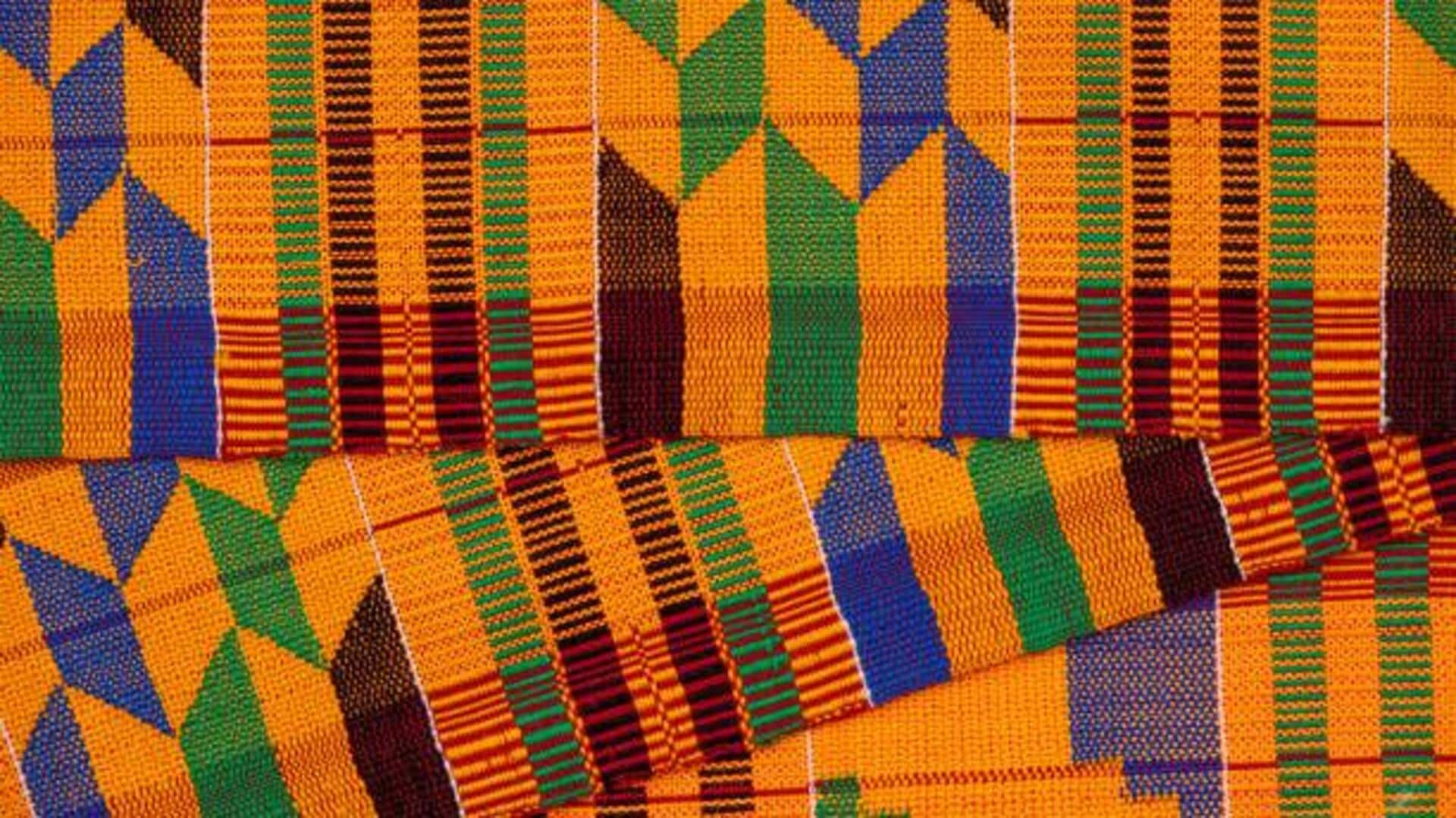
Kente cloth: History, significance, and uses
What's the story
Kente cloth, the colorful and intricately designed textile, is an important cultural symbol of West Africa. Traditionally, the cloth is woven by the Akan people of Ghana and is famous for its bright colors and geometric patterns. Each design carries a meaning, often narrating stories or conveying proverbs. Kente cloth is not only a fashion statement but also a representation of heritage and identity for many Africans.
#1
Origins and history of Kente cloth
The origins of Kente cloth date back to the Ashanti Kingdom in the 17th century. Initially, it was reserved for royalty and important ceremonies due to its labor-intensive production process. The weaving of Kente involves using silk and cotton threads to create complex patterns on a loom. Over time, the use of Kente expanded beyond Ghana, becoming a symbol of African pride worldwide.
#2
Symbolism behind patterns
Each pattern in Kente cloth has its own unique symbolism, often representing historical events, moral values, or social status. For example, some patterns may symbolize wisdom or strength, while others could represent love or unity. The choice of pattern can be deliberate based on the occasion it is worn for, be it weddings or funerals.
#3
Modern uses of Kente cloth
Today, Kente cloth is used in a variety of ways beyond traditional attire. It is used in accessories such as scarves and bags, as well as home decor items like cushions and wall hangings. The vibrant colors make it a favorite among fashion designers looking to incorporate cultural elements into their collections.
#4
Preservation efforts for Kente weaving
Preserving the art of Kente weaving is essential to keep cultural heritage alive. In recent years, efforts have been made to support artisans through workshops and educational programs that teach younger generations about this craft's importance. By promoting sustainable practices within communities, these initiatives ensure that this iconic textile continues to thrive for future generations.